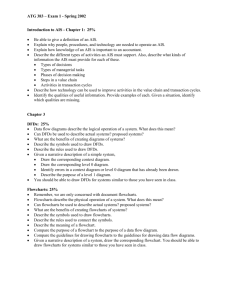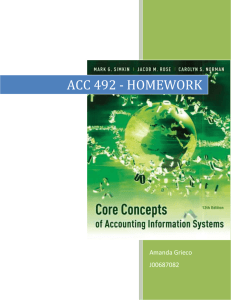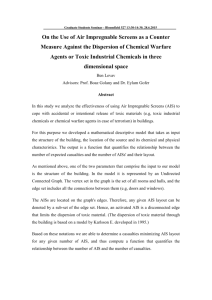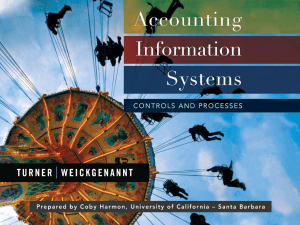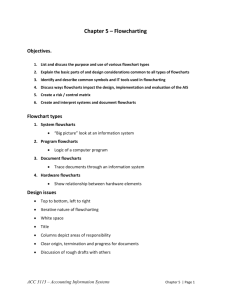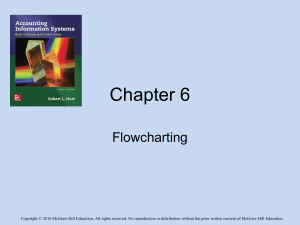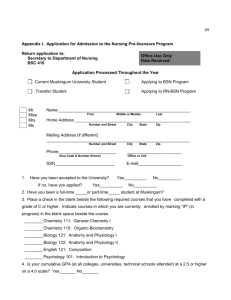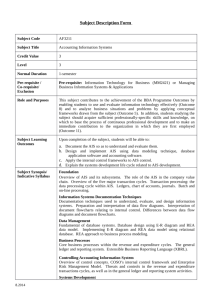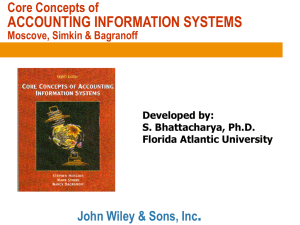Exam 1 Review
advertisement
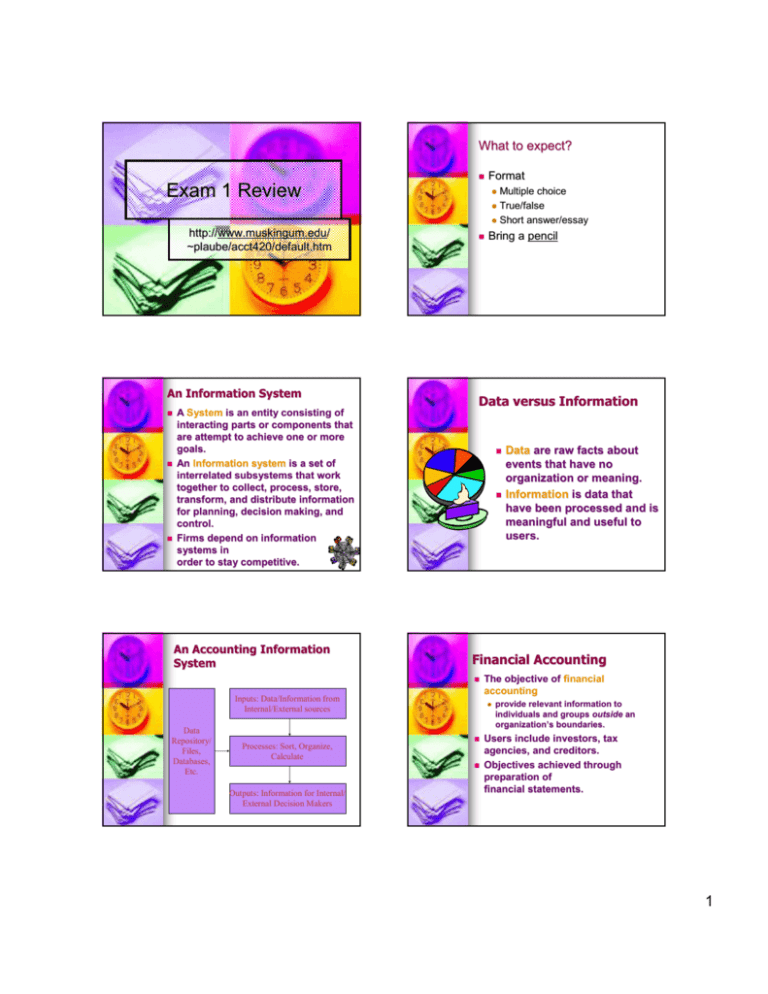
What to expect? n Exam 1 Review Format Multiple choice True/false l Short answer/essay l l http://www.muskingum.edu http://www.muskingum.edu// ~plaube/acct420/default.htm An Information System n n n A System is an entity consisting of interacting parts or components that are attempt to achieve one or more goals. An Information system is a set of interrelated subsystems that work together to collect, process, store, transform, and distribute information for planning, decision making, and control. Firms depend on information systems in order to stay competitive. An Accounting Information System n Data versus Information n n Inputs: Data/Information from Internal/External sources Processes: Sort, Organize, Calculate The objective of financial accounting l n n Outputs: Information for Internal/ External Decision Makers Data are raw facts about events that have no organization or meaning. Information is data that have been processed and is meaningful and useful to users. Financial Accounting n Data Repository/ Files, Databases, Etc. Bring a pencil provide relevant information to individuals and groups outside an organization’s boundaries. Users include investors, tax agencies, and creditors. Objectives achieved through preparation of financial statements. 1 The Financial Accounting Information System Chapter 16 Information Technology and AISs Inputs – transactions measured in monetary units. Audit trail – enables information users to follow the flow of data through the system. n n l n n Parallels the accounting cycle, cycle, n n n l n which begins with a transaction ends with producing financial statements (and closing temporary accounts) n A good audit trail permits managers to follow source document data n n n from input through processing to the output report (and vice versa) n Documentation of Systems n n n Documentation is a vital part of any AIS. Accountants use many different types of diagrams to trace the flow of accounting data through an AIS. A wide variety of software is available for documenting AISs. Why Documentation Is Important n n n n n n n Types of Documentation n n n n n Document Flowcharts Systems Flowcharts Data Flow Diagrams Process Maps Program flowcharts Decision tables Depicting how the system works Training users Designing new systems Controlling system development and maintenance costs Standardizing communications with others Auditing AISs Documenting business processes EndEnd-User Computing n n Introduction The Importance of Information Technology to Accountants Input, Processing and Output Devices Secondary Storage Devices Data Communications and Networks Computer Software n EndEnd-user computing refers to the ability of nonnoncomputer employees to create their own computer applications. It is important for endendusers to document applications they develop. 2 Business Process Fundamentals The accounting cycle begins when accounting personnel analyze a transaction from a source document. document. A source document is a piece of paper or electronic form that records a business activity such as the purchase or sale of goods. n n Business Process Fundamentals n n n n Journals Ledgers Trial Balances Financial statements are the primary output of a financial accounting system. l l l l Types of Codes n n n n Mnemonic Codes give visible clues concerning the objects they represent. Sequence Codes assign numbers or letters in consecutive order. Block Codes are sequential codes in which specific blocks of numbers are reserved for particular uses. Group Codes reveal two or more dimensions or facets pertaining to an object. Income Statement Statement of Owners Equity Balance Sheet Statement of Cash Flows Design Considerations in Coding n n n n Codes should serve some useful purpose. Codes should be consistent. Codes should be standardized throughout the organization. Codes should plan for future expansion. Considerations in Report Design n n n n Exception reports. reports. Useful to managerial decisiondecisionmaking without creating information overload. overload. Format should be l convenient, l contain fundamental identification, identification, l be consistent. consistent. 3

